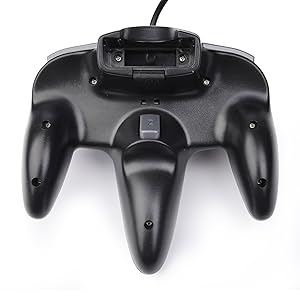
N64 Serial Number
The Legend of Zelda: Ocarina of Time is an action-adventure game developed and published by Nintendo for the Nintendo 64. It was released in Japan and North America in November 1998, and in Europe and Australia the following month. Star wars death troopers book. Ocarina of Time is the fifth game in the Legend of Zelda series, and the first with 3D graphics.
•: November 2003 Mode(s) The Legend of Zelda: Ocarina of Time is an developed and published by for the. It was released in Japan and North America in November 1998, and in Europe and Australia the following month. Ocarina of Time is the fifth game in the series, and the first with. Originally developed for the peripheral, it was instead released on a 256- (32-), the largest-capacity cartridge Nintendo produced at that time.
The player controls in the fantasy land of on a quest to stop, king of the, from obtaining the, a sacred wish-granting relic. He travels through time and navigates dungeons to awaken the, who can seal Ganondorf forever. Ocarina of Time introduced features such as a target-lock system and context-sensitive buttons that have since become common in 3D adventure games. Music plays an important role: to progress, the player must learn to play several songs on an, and the game was responsible for increased interest in the instrument.
In Japan, more than 820,000 copies were sold in 1998, making it the year's tenth-bestselling game. During its lifetime, over a million copies were sold in Japan, with over seven million sold worldwide. The game won numerous awards and accolades and is considered by many to be one of the, with several publications having ranked it the best video game of all time. It is also the highest-rated game on site and the second highest-rated on. Ocarina of Time was followed by a direct sequel,, in 2000. It was to the alongside, an alternative version of the game with new puzzles, and was included in The Legend of Zelda: Collector's Edition in 2003.

It was ported to the in 2003, [ ] and released on the service for the in 2007 and in 2015. The rereleases were well received, though some critics felt the game had aged badly. A for the,, was released in 2011 with updated graphics and 3D effects; it includes Master Quest 's rearranged dungeons, absent from the Wii, Wii U, and iQue versions. The on-screen display shows actions mapped to buttons. Here, the B (green) button controls 's sword attack, the A (blue) button sheaths Link's sword, and the C (yellow) buttons control set-specific items.
The Legend of Zelda: Ocarina of Time is a fantasy with and elements set in a large, expansive environment. The player controls series protagonist from a third-person perspective in a three-dimensional world. Link primarily fights with a sword and shield, but can also use other weapons such as projectiles, bombs, and magic spells.: 22–25 The control scheme introduced techniques such as actions and a targeting system called 'Z-targeting', which allows the player to have Link focus and latch onto enemies or other objects.: 11–12 When using this technique, the camera follows the target and Link constantly faces it. Projectile attacks are automatically directed at the target and do not require manual aiming. Context-sensitive actions allow multiple tasks to be assigned to one button, simplifying the control scheme. Equisync vs holosync. The on-screen display shows what will happen when the button is pushed and changes depending on what the character is doing.
For example, the same button that causes Link to push a box if he is standing next to it will have him climb on the box if the analog stick is pushed toward it. Much of the game is spent in battle, but some parts require the use of. Exploration is another important aspect of gameplay; the player may notice inaccessible areas and return later to find them explorable after obtaining a new item, such as the bomb, to blast through walls, or the hookshot, to reach distant places. When the player uses Z-targeting, the view shifts to a format and arrows indicate the targeted enemy. The player can then around the enemy to keep their sight on them.